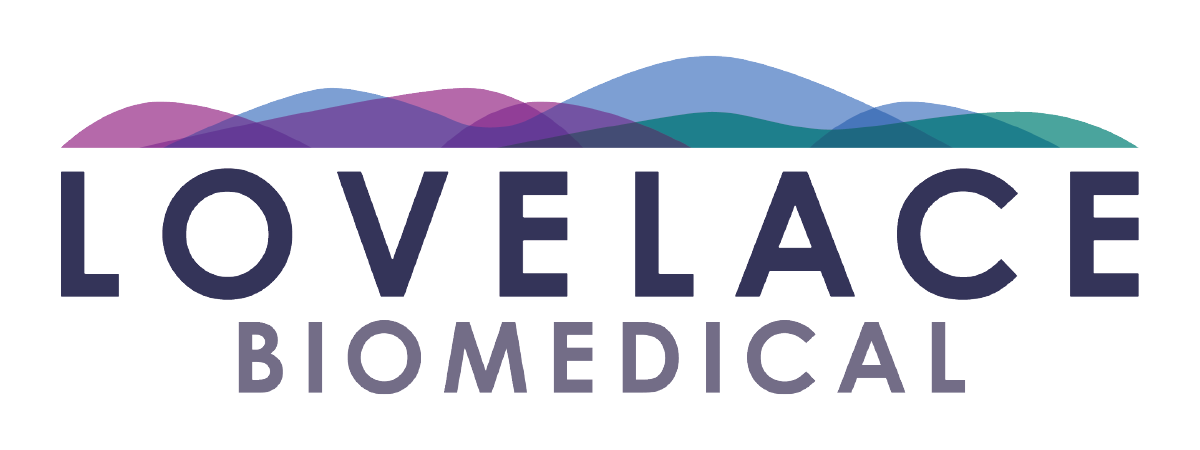Medical Countermeasures
Lovelace Biomedical has extensive experience in evaluating preclinical medical countermeasures research & studies against biological, chemical, radiological, and explosive threats, as well as combat casualty care. Lovelace has the ability to work with agents requiring containment and chemical surety (i.e. meets the minimum requirements for AR50-6 Chemical Surety) and CDC select agents in addition to our Nuclear Regulatory Commission (NRC)-approved facilities. We undertake regulated studies in efforts to complete FDA Animal Rule Investigational New Drugs (INDs) leading to full New Drug Application (NDA)/Biologic License Application (BLA) programs.
Lovelace Biomedical’s facilities are registered with the CDC/APHIS select agent program. These facilities can work with bacterial agents, viral agents, and toxins that require BSL-3 and/or ABSL-3 enhanced containment.
Approved agents include:
- anthraces
- tularensis
- pestis
- Brucella abortus
- Brucella melintensis
- Brucella suis
- Burkholdera mallei
- Burkholderia pseudomallei
- Coxiella burnetti
- Monkeypox virus
- Highly pathogenic avian influenza
- Eastern equine encephalitis
- Venezuelan equine encephalitis
- Ricin
- Botulinum neurotoxin
Lovelace Biomedical has highly secure, specialized facilities in which we conduct chemical warfare agent (CWA) / toxic industrial chemical (TIC) exposures in compliance with the chemical weapons convention. The laboratory has been conducting research with chemical agents for more than two decades, and can apply novel tools to these studies, such as pulmonary and neurophysiology (ie EEG) and imaging with CT/MRI.
We have worked with a variety highly toxic chemical agents including:
- sulfur mustard
- Sarin
- Soman
- Vx
- phosgene
- methyl isocyanate
- ammonia
- formaldehyde
- hydrogen sulfide
- chlorine
Lovelace Biomedical has highly specialized models and facilities to mimic injury and polytrauma experienced by the warfighter in austere conditions. Our team is working with technologies that will both widen the post-injury window of life in a far-field environment and provide short and long term beneficial clinical outcome.
Capabilities include:
- Realistic models of traumatic brain injury, spinal cord injury & hemorrhagic shock
- Veterinary monitored surgical suite, shock tube, and HYGE™ acceleration-deceleration (reverse acceleration) device
- Military designed and approved test track and transport vehicle to simulate realistic conditions for en-route care with physiological models
- Air transport facilities to simulate realistic conditions for en-route care with physiological models
- Advanced neuroimaging (fMRI, CT, EEG, MEG) to improve diagnosis and understanding of pathology/treatment following TBI and polytrauma
Our team has developed and validated models of acute radiation syndrome, dermal burn/radiation combinations, and systemic injury models in the gastrointestinal and cardiopulmonary systems, including deep internal expertise in radiation dosimetry, radiation drug countermeasure drug development and risk assessment.
Lovelace has developed animal models and research capabilities for evaluating medical countermeasures to mitigate the health effects from exposure to both internal radionuclides and external irradiation.
Lovelace has a clinical linear accelerator (LINAC), a Philips RT-250 orthovoltage X-ray therapy unit, and Grenz x-Ray irradiator that can perform whole-body or partial-body irradiation in large (swine, nonhuman primates [NHP]), small (mice, rats) animals, and dermal wound exposures, respectively. Differing degrees of supportive care define models for hematopoietic and gastrointestinal syndromes. Understanding these models is essential to define the mechanisms of injury and assist in developing targeted therapeutics. These acute effects models are used to evaluate therapies for ameliorating or preventing the biological effects from high doses of external irradiation. Lovelace has full GLP pharmaceutical R&D capability to bring drugs to approval under the FDA “animal rule” or for standard clinical indications.
Linear Accelerator (NHP &Swine)
- GLP validated (6.8 Gy) LD 50/60 in NHPs (Rhesus, M); field supportive care; full hematopoietic syndrome; GI
complications - Qualified LD 50/60 in Göttingen (1.94 GY) and Sinclair (2.55 Gy) Minipigs supportive care (M/F); GI complications
- Qualified PBI Sinclair Swine GI model (14Gy)
- Combined irradiation thermal burn and wound healing model in Göttingen Minipigs
Philips RT-250 (Mice & Rats)
- LD 50/60 mice (C57B, M/F)
- Radiation-induced lung fibrosis
Grenz X-Ray
- Radiation induced wound healing model (Yorkshire Swine)
Our Capabilities
- Animal models of metabolism and biokinetics for a large variety of radionuclides
- Exposure to radionuclides by inhalation, ingestion, percutaneous wounds, intravenous, intraperitoneal, intratracheal delivery, and absorption through intact skin
- Broad range of animal species: mice, rat, dog, swine
- Material balance study designs including complete excreta collection and analysis of biological samples from blood to tissues to organs
- Analytical radiochemistry capabilities for measuring radionuclides in biological samples
- Biokinetic and dosimetric modeling of experimental animal data, with or without the effects of medical countermeasures
- Capability for measuring radionuclides in living animals (whole-body counting)

